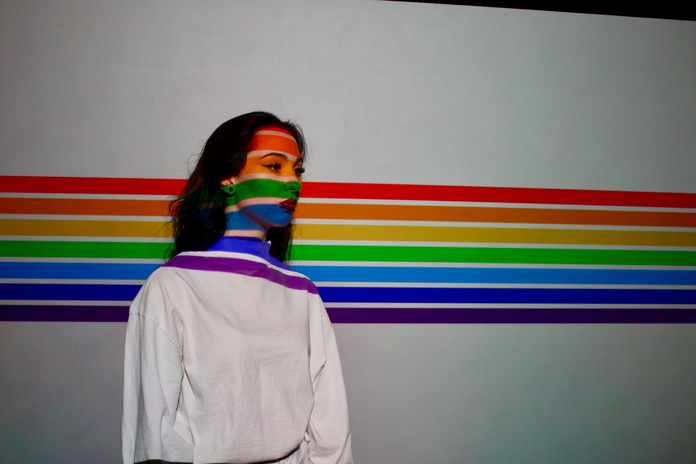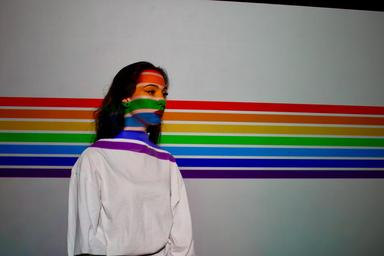Everyone has a favorite color, don’t they? But did you know that each color has different properties that can affect your mood? Yes! Some colors directly influence people’s humors, how they will follow their day, react to certain situations and even sleep.They act on our psychological state in a variety of ways and are usually linked to feelings.
But how does it work? The light radiated by the colors affects our nervous system through our eyes and can directly affect the center of our emotions.Each individual reacts differently to each color, depending on its intensity, luminosity, contrast and saturation.
Psychology assigns meanings to certain nuclei that are basic to any individual who lives in Western culture.Hence the importance of nucleus theory not only for psychology, but also for art, architecture, marketing and fashion. The colored combinations are not defined by chance.
- Red, orange and yellow
-
Red: Stimulating color that symbolizes strength, victory, leadership and agitation. Therefore, it can increase anxiety and discomfort in people. In contrast, it is directly related to strong feelings, such as love, anger, desire and passion. Red is also stimulating and induces people to action. For this reason, it is a color widely used in advertisements, promotions, fast food ads and signposts.
Orange: It is a symbol of courage and optimism. It is usually associated with the balance of emotions.
Yellow: Transmits light and heat. It represents creativity and youth, in addition to radiating joy. Because it is considered a warm tone, it also conveys joy and favors communication. Those who wear yellow feel more confident. Putting a yellow flower on the work table, for example, can help to give off positive energy and lightness to the environment.
Red, orange and yellow are exciting colors that activate and give energy. They stimulate activity and give encouragement. Suitable for people who feel unmotivated, with a tendency to discourage. When defining the walls of an environment, these colors “light up”, can be used in places where we want to do activities and never in places where we want to obtain calm and relaxation.
- Green, blue and violet
-
Green: Color of hope and nature, it also refers to life, health and abundance. More than a color, green is almost a state of mind, as it spreads hope. It refers to serenity and is excellent for practicing activities that require precision. However, the most radical say that indecisive people should avoid using this color.
Blue: It is the color of dreams, of the imagination. Blue is also associated with sincerity and tranquility. For those looking for relief from daily tensions and a good night’s sleep, blue is a great choice. It is directly linked to calm and balance, because it causes relaxation.
Violet: If you are very concerned, the tip is to bet on the color violet, which would be a source of self-confidence and tranquility. It is also linked to spirituality and mysticism as well as serves as support for those who need to make important decisions on a daily basis.
Green, blue and violet have a sedative effect and bring peace to the mind. They are ideal for use in job interviews, as they convey calmness, sincerity and responsibility. The green of nature, the deep blue of the sky, the elegant violet of flowers, they all carry the message of emotional healing. Ideal for placing on walls of places where we want to relax.
- The white
-
White is a neutral color and expresses sincerity, innocence, spirituality and peace. A color known for being light and related to purity and simplicity. Ideal for placing in places where we want maximum concentration.
Although it does not cause emotional changes, which makes it ideal for painting the walls of a study room, it can cause sensations related to coldness and emptiness because it is associated with hospitals, nursing homes and hospices, according to studies on colors.
- The pink
-
The color pink is a kind of red attenuated by the presence of white. It represents beauty and romanticism. As for decoration, they are usually used for childhood, but many elderly people love pink, as this color symbolizes altruism, a good heart and sensitivity.
The light pink conveys kindness, innocence and good intentions, although unconsciously it can be interpreted as immaturity. Ideal to use if you need someone to trust you for something.
Fuchsia, which is a stronger and more powerful pink, can be compared to the colors that activate and give energy, such as red, orange and yellow, mentioned at the beginning.
- Black and gray
-
Black: Color associated with the mystery and the obscure. Culturally, it symbolizes sadness, mourning and melancholia, but also elegance, sobriety and sophistication in clothing. It is not recommended to use in summer as it visually gives the feeling of heat and little freshness. At home, those who have rooms with black tones tend to have a more turbulent sleep.
Gray: As a mixture of black and white, the gray color symbolizes balance. It also brings sadness, pessimism and bad vibes. In clothing it has a meaning of distrust, boredom, discouragement, although it also conveys independence, respect, professionalism and seriousness.
- The brown
-
Brown represents discipline, obedience and responsibility. It also expresses maturity, security and awareness. For the most superstitious, this is the color of fear. They believe that brown is dark and even negative. But not quite. The color is related to safety and maturity and gives the feeling of firmness and stability. In addition, it brings objectivity and a sense of direction.
——————————————————————
The article above was edited by Gabriela Girardi
Like this type of content? Check Her Campus Cásper Libero Home Page for more!


